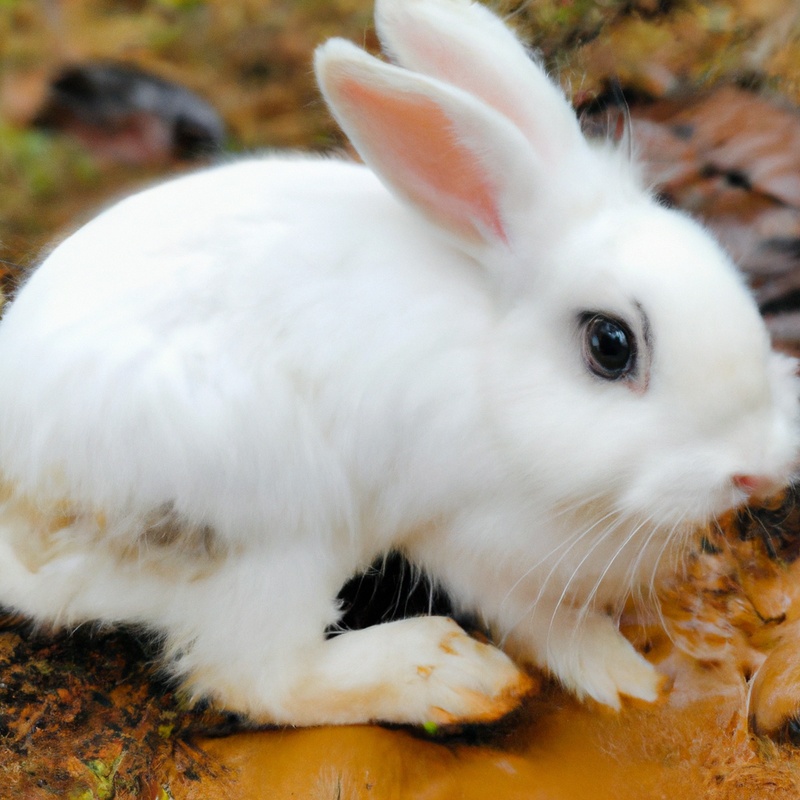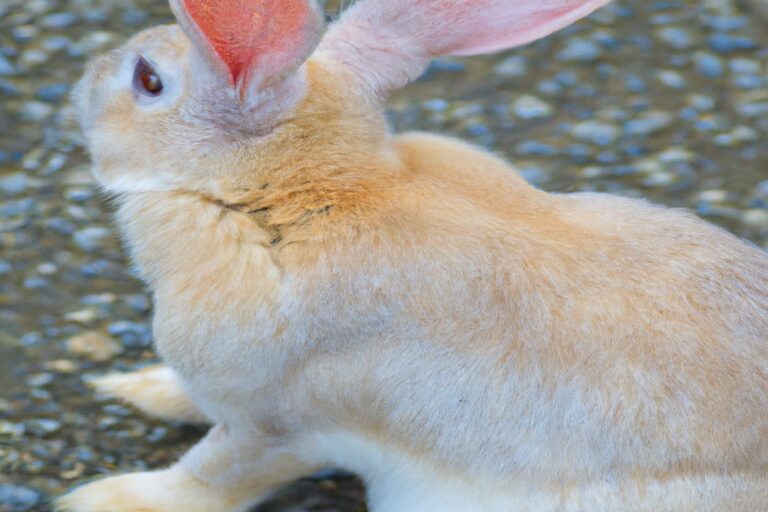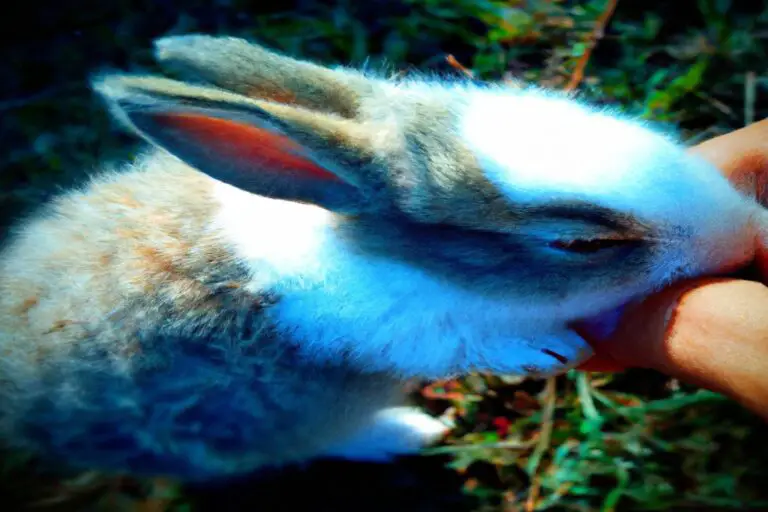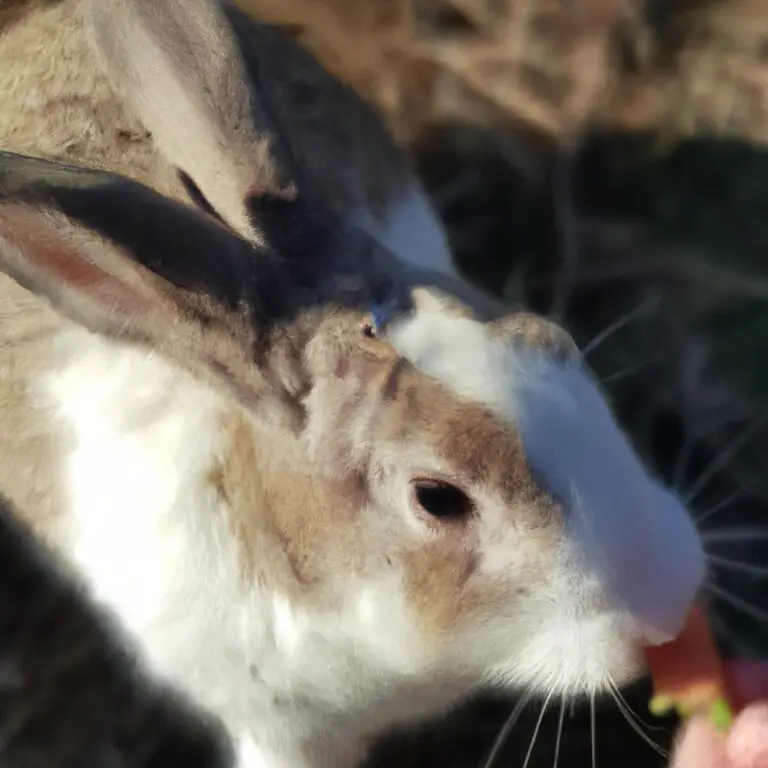Do Rabbits Know Their Names? The Myth Debunked
Key Takeaways:
- Rabbits can learn to recognize their names when consistently associated with positive reinforcement.
- Rabbits respond to the sound of their names in various ways, including turning their heads or approaching their owners.
- The ability of rabbits to understand their names may vary based on individual intelligence and the quality of training.
- Establishing a strong bond with your rabbit and using consistent training methods can improve their ability to recognize and respond to their names.
Can rabbits recognize their names? It’s a question that might have crossed your mind if you’re a proud rabbit owner or simply curious about these adorable creatures.
Do rabbits have the ability to understand human language and respond to their names?
Well, get ready to dive into the fascinating world of rabbit communication. In this article, we’ll explore how rabbits communicate, whether they respond to sounds, and if they use their names as a cue.
We’ll also delve into the research on rabbit recognition, the factors that affect name recognition, and provide some tips for teaching your rabbit its name.
Get ready to unravel the mysteries of rabbit language and discover how these furry friends identify individuals in their own unique ways.
| Yes | No | |
| Rabbits | Some rabbits can learn to recognize their names | Most rabbits do not understand human names as cues |
Can Rabbits Recognize Their Names?
Yes, rabbits can recognize their names with proper training and consistency.
How Do Rabbits Communicate?
Rabbits communicate through a combination of body language, vocalizations, and scent marking.
They use their body posture, such as hopping and running, to convey different messages.
Ears positioned upright indicate alertness, while ears laid back show fear or submission.
Rabbits also make a variety of vocal sounds, including purring, growling, and thumping their hind legs.
They use these sounds to express different emotions.
Lastly, rabbits rely on scent marking to communicate with other rabbits, using glands on their chin and feet to leave scent trails.
Understanding these signals helps us better connect with our bunny friends.
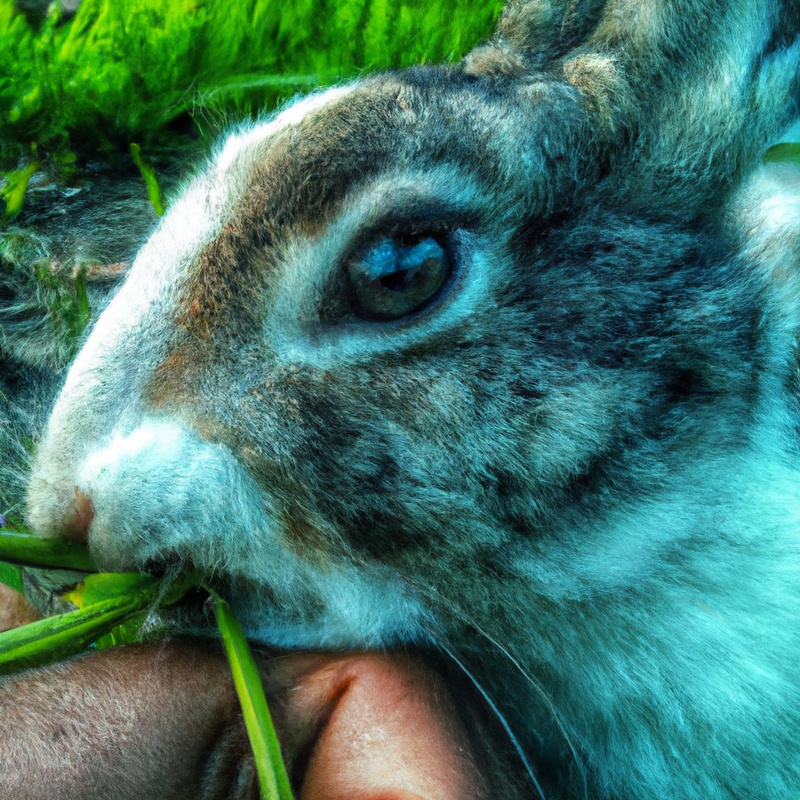
Do Rabbits Respond to Sounds?
Rabbits are known to respond to sounds.
They have acute hearing and are sensitive to various noises in their environment.
These furry creatures can detect high-pitched sounds that are beyond the human range of hearing.
When you call your rabbit or make certain sounds consistently, they may learn to associate those sounds with specific actions or rewards.
For example, they may come running when they hear the sound of their treat bag or the opening of their food container.
So, yes, rabbits do respond to sounds!
Do Rabbits Use Their Names as a Cue?
Do rabbits use their names as a cue?
Yes, they can.
Rabbits are intelligent animals and can learn to associate their names with certain actions or behaviors.
By repeatedly saying their names and rewarding them with treats or praise, rabbits can learn to respond when called.
It’s important to use positive reinforcement and be consistent in using their names to reinforce this behavior.
Additionally, rabbits may also respond to other cues like the sound of their owner’s voice or the opening of their food container.
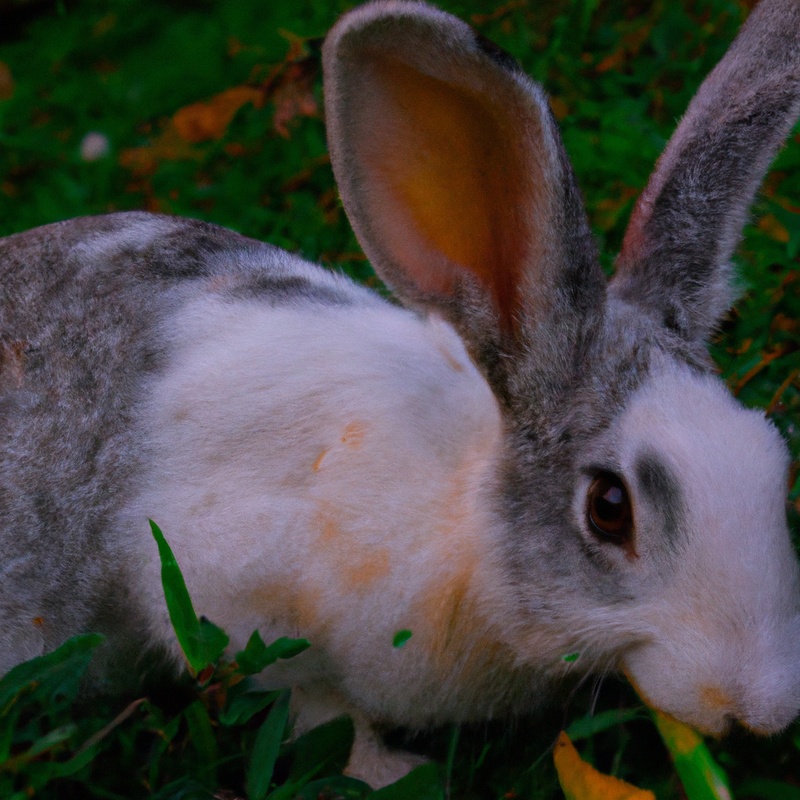
Research on Rabbit Recognition
Researchers have conducted studies to determine if rabbits can recognize their names.
These studies involve training rabbits to respond to specific names to assess their ability to distinguish between different sounds.
The results suggest that rabbits can indeed recognize and respond to their names.
They may exhibit behaviors like turning their heads or approaching the person calling their name.
However, it’s important to note that individual rabbits may vary in their responses, and more research is needed to fully understand the extent of their recognition abilities.
Factors That Affect Rabbit Name Recognition
There are a few factors that can affect rabbit name recognition:
- Tone of voice: Rabbits are sensitive to tone, so using a consistent and positive tone when saying their name can help them recognize it.
- Frequency of use: Regularly saying your rabbit’s name will increase their familiarity with it, making it easier for them to recognize and respond to it.
- Association with positive experiences: If you consistently pair your rabbit’s name with treats or rewards, they will learn to associate their name with positive experiences and be more likely to recognize it.
- Length and distinctiveness: Shorter names that are unique and easy to distinguish from other sounds or words are more likely to be recognized by rabbits.
- Bond with their owner: Rabbits who have a strong bond with their owner are more likely to recognize their name, as they often pay closer attention to their owner and their voice.
Remember, each rabbit is unique, so it may take time and patience to help your rabbit recognize their name.
With consistency and positive reinforcement, you can increase their name recognition.
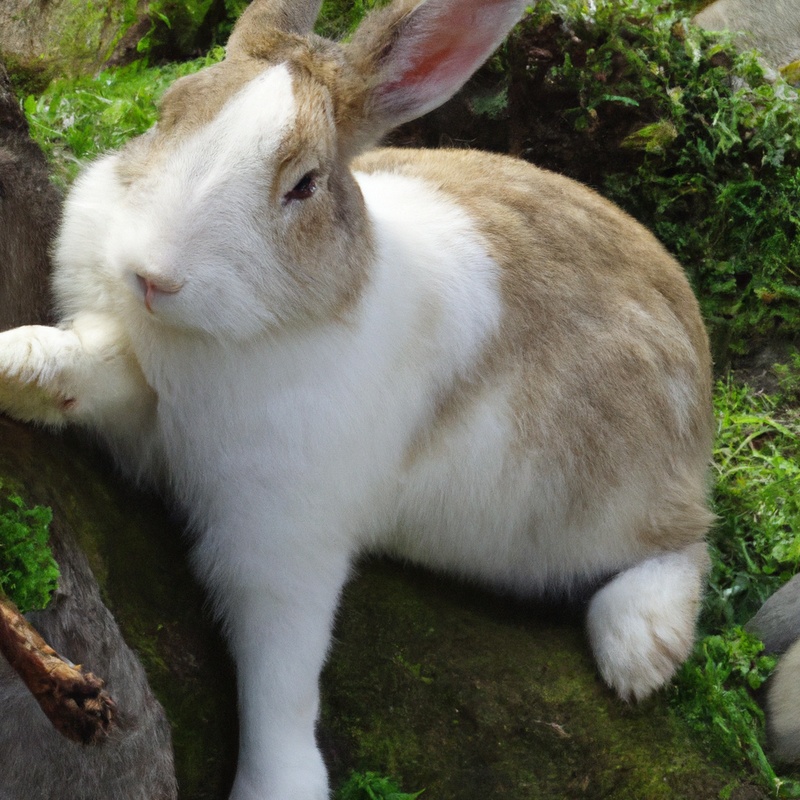
Tips for Teaching Your Rabbit Its Name
Teaching your rabbit its name is a fun and rewarding process. Here are some tips to help you out:
- Choose a short and distinct name for your rabbit, preferably with two syllables. This will make it easier for them to recognize and remember.
- Use positive reinforcement techniques to associate their name with something pleasant. Every time you say their name, offer a small treat or give them gentle praise.
- Be consistent and patient. Practice saying their name several times a day in a calm and friendly tone. Eventually, they will start associating the sound with themselves.
- Consider using a clicker to reinforce their name. Click the clicker and then say their name, followed by a treat. This can help to strengthen the connection between their name and the reward.
- Make sure to always use their name in a positive context. Avoid calling them when it’s time for a vet visit or something they might not enjoy. You want their name to always have a positive connotation.
Remember, every rabbit is unique and learns at their own pace. With time and patience, your rabbit will likely learn to recognize and respond to their name.
Enjoy the process and have fun bonding with your furry friend!
Other Ways Rabbits Identify Individuals
Rabbits identify individuals through various ways.
They rely heavily on scent, recognizing each other’s unique smell.
They also use body language and behavior, such as ear position and vocalizations, to differentiate between individuals.
Rabbits are highly observant creatures and can remember familiar faces and routines, making it easier for them to identify their human caretakers.
Additionally, rabbits can recognize certain objects associated with individuals, such as their feeding bowls or toys.
All these methods contribute to a rabbit’s ability to identify and distinguish between different individuals.
Frequently Asked Questions
Frequently Asked Questions:
1. Can rabbits recognize their names?
Yes, rabbits can learn to recognize and respond to their names. While they may not understand the meaning behind the name like humans do, they can associate the sound with receiving attention or a treat.
2. How can I teach my rabbit its name?
To teach your rabbit its name, you can use a positive reinforcement method. Start by saying their name whenever you interact with them or give them a treat.
Eventually, they will make the association between the sound and their own identity.
3. How long does it take for a rabbit to learn its name?
The time it takes for a rabbit to learn its name can vary. Some rabbits may pick it up quickly within a few days, while others may take a few weeks or even longer.
Patience and consistency are key when training your rabbit.
4. Can rabbits understand other words or commands?
While rabbits may not understand spoken language in the same way humans do, they can learn to respond to certain commands or cues through training. For example, they can be trained to come when called or to perform basic tricks.
5. Do all rabbits recognize their names?
Not all rabbits may learn to recognize their names, as individual personalities can play a role in their ability to respond to specific sounds. However, with proper training and reinforcement, many rabbits can learn to associate their name with positive experiences.
Remember, each rabbit is unique, so it’s important to be patient and consistent in your training efforts.
Can rabbits understand human language?
Rabbits do not understand human language in the same way that we do.
While they may become familiar with certain sound patterns and associate them with actions or rewards, they do not comprehend words like we do.
However, rabbits are highly perceptive animals and can pick up on tone of voice and body language.
So while they may not understand the words we say, they can still respond to our emotions and intentions.
How long does it take to train a rabbit to recognize its name?
Training a rabbit to recognize its name can vary in time depending on the individual rabbit and the consistency of the training. On average, it may take a few weeks to a few months.
The key is to use positive reinforcement, such as treats and praise, consistently and repetitively.
Start by saying the rabbit’s name while offering a treat, then gradually reduce the treat dependency while still using verbal praise. Patience and regular training sessions are crucial in achieving success.
What other signals do rabbits use to communicate?
Rabbits use a variety of signals to communicate with each other. One way they communicate is through their body language.
They can thump their hind legs to signal danger, or flatten their ears to show fear or submission.
Another way they communicate is through vocalizations. They can make different sounds, such as grunting or purring, to convey different messages.
Additionally, rabbits use scent marking to communicate with other rabbits.
They have scent glands on their chin and under their tail, which they use to mark their territory and communicate their presence. Overall, rabbits have a complex system of communication that involves body language, vocalizations, and scent marking.
Are some rabbit breeds more trainable than others?
Some rabbit breeds may be more trainable than others, but it ultimately depends on the individual rabbit’s personality and temperament. Certain breeds, like Holland Lops and Mini Lops, are often considered to be more docile and easier to train.
However, it’s important to remember that every rabbit is unique and can have different intelligence levels and abilities to learn.
With patience, positive reinforcement, and consistent training methods, rabbits of any breed can be trained to some extent.
Final Verdict
While rabbits may not possess the same level of understanding and comprehension as humans, research suggests that they can indeed recognize and respond to their names.
Rabbits communicate primarily through body language, but they also have the ability to learn and associate vocal cues with specific individuals.
Factors such as consistency and positive reinforcement play a vital role in teaching rabbits their names.
Additionally, rabbits use other signals such as scent marking and body postures to identify individuals.
Although some rabbit breeds may be more trainable than others, with patience and dedication, any rabbit can learn to recognize its name.
So go ahead and start training your rabbit today, using the tips and techniques discussed, and enjoy the improved communication and bond with your furry friend.

